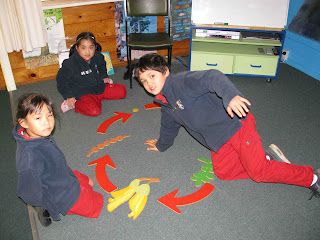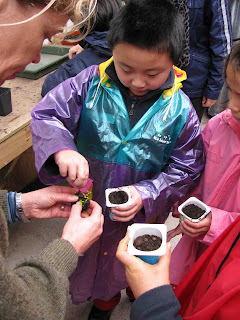What was the best part of our trip to Arataki?
Remember to use the word BECAUSE!
What new facts did you learn?
What new facts did you learn?
 |
| First stop - a session with Bronwyn in the classroom. |
 |
| Bronwyn got us to complete a puzzle on the life cycle of a plant. Then we had to try and trick our friends. |
 |
| We watched a cool DVD on seed dispersal. Then we got given some sycamore tree seeds to throw in the air and watch them glide to the ground like a helicopter! |
 |
| Our next stop was the nursery. We could see tray after tray of native seeds. They were getting them ready to put into some soil to grow into a big, beautiful trees. |
 |
| When the seeds are planted they are put into a seed tray. They have a very interesting watering system set up. |
 |
| Once the seeds sprout and become seedlings they are then potted into individual pots. This gives them more space to grow. |
 |
| They are then repotted into even bigger pots and put into a separate room. I think they called this the toddler's room! |
 |
| You can see the size of the next pots! The black ones in the middle of the picture. They are still covered at this stage to protect them from the weather. |
 |
| After lunch we had time for a quick photo in Waitakere Ranges photo frame. The back row had to use team work to help each other to stand up on the frame. |
 |
| The end of the bush walk. John was asking questions to see if we had remembered everything he had told us. We had a fabulous time at Arataki. |








